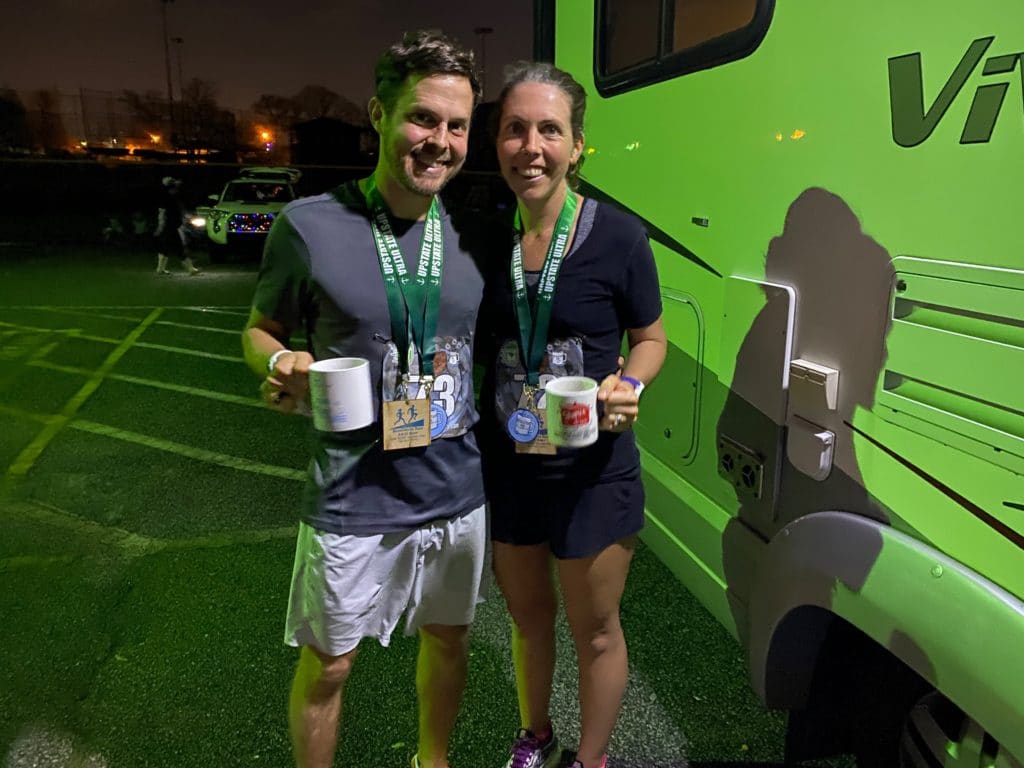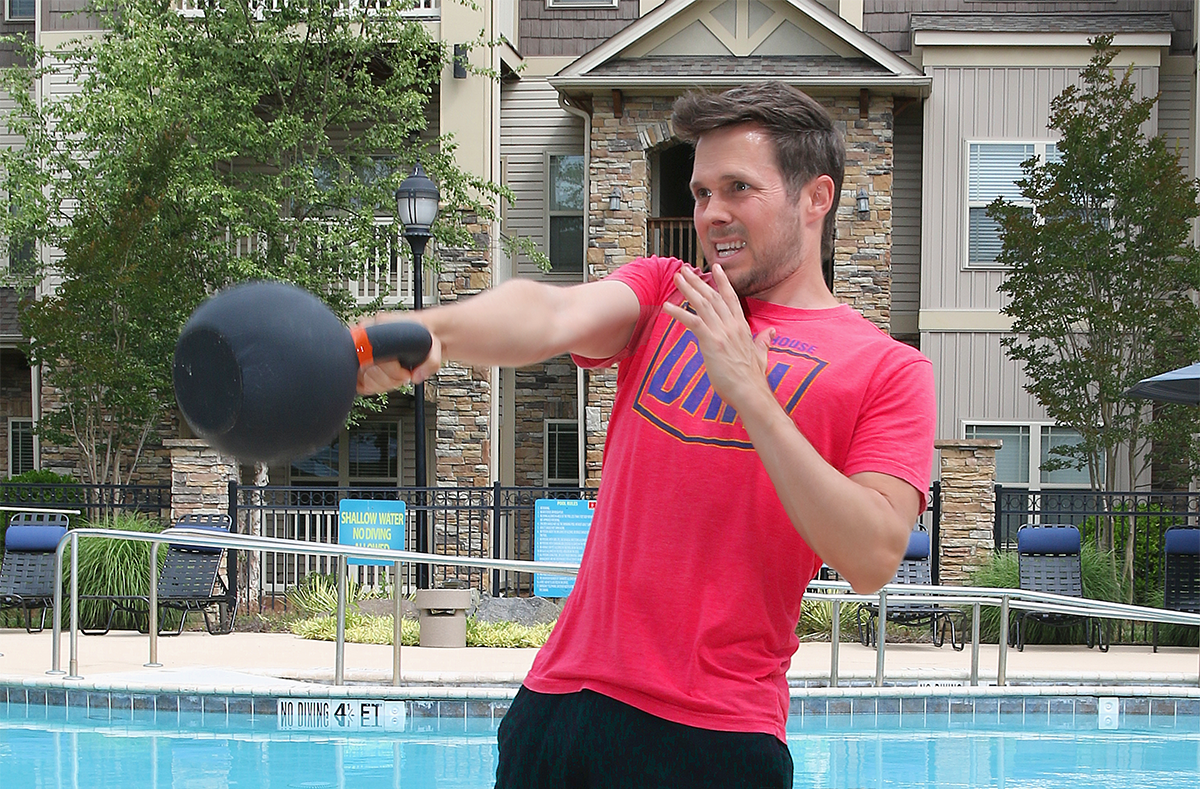How I’m Training for My First Ultramarathon in 9 Years… With No Long Runs

In 2013, I ran my first 100-mile ultramarathon.
And then, just like that, I quit running.
Quitting wasn’t really the plan. But I got busy with the tour for my first book, and just never started training again.
The 100 had been the culmination of a decade of hard work, ups and downs, a Boston Marathon journey, and of course, a plant-based diet.
I had actually loved running the race, and figured it was the first of many 100’s. But after I stopped, I learned that I really enjoyed not running at all.
So that’s pretty much what I did. For the next nine years.
Even When I Used to Run, I Wasn’t a Runner
Even when I used to run, I said I wasn’t a real runner.
There were times when I felt like part of the community (particularly when I read Born to Run, and later, after the Boston Marathon bombing.) But running never did for me what I knew it did for real runners.
I never “needed” to run like they did, and really, I never wanted to run either. Mostly, it made me bored — especially the dreaded weekend long run.
Race days excepted, I can’t think of a single day when I’d have preferred to run than to stay inside. Or to go to the gym, or play soccer, or whatever.
So why run at all, you ask?
Because even though I didn’t love running, I loved training. Having a big goal, making visible progress, and eventually accomplishing something that I once thought was impossible (for me, anyway).
The Boston Marathon and the 100-miler became significant sources of meaning and pride for me, and still are. For me, they’ll always be symbols of what’s possible.
Improving was addictive. That’s why I ran.
And now… I’m back. With a twist.
Last year was a transformational one for me. I got into near-daily kettlebell training, and I’ve kept it up for 14 months now.
During that time, I started running again. Never because I “wanted” to, but just for fitness. Two miles here, three miles there. No long runs, and almost never more than 10 miles in a week.
In September, I ran a 10K with my son. A friend who worked with the sponsor offered us free entry, and I figured why not?
Then I ran a trail half marathon out in San Francisco, a Spartan / No Meat Athlete collaboration. “A work event,” I told myself.
And then on a whim, I signed up for a 5-hour run on New Year’s Day. I didn’t do any traditional training — really, I just wanted to see how all my kettlebell training would translate into easy-pace ultrarunning. It wasn’t an astounding result, but it wasn’t bad either: 28 miles, good for third place among men.
Definitely encouraging.
Again, this was without specific running training. The half marathon had been my longest run up until then, and other than that, an easy nine-miler and a couple seven-milers were it.
Is it possible, I wondered, that I could start racing marathons and ultras again… without doing almost any of the long runs I dreaded so much?
And so began Act III of my running life. (If you consult your program, you’ll see that Act I was qualifying for Boston, Act II was the 100.)
How to Run Ultramarathons Without Doing Long Runs
This isn’t the first time no-long-run training has piqued my interest. In 2011, I read it about Brian Mackenzie and Crossfit Endurance in Tim Ferriss’ 4-Hour Body.
The claim was that Crossfit Endurance athletes ran 100-milers without ever doing more than a half marathon in training, focusing instead on strength, form (via the POSE method), and the spillover benefits of anaerobic workouts into aerobic fitness.
Count me in, I thought.
But of course, there was a catch. Just about every mile (and fraction of a mile) on the sample Crossfit Endurance plan in Ferriss’ book was fast. If not a 400- or 800-meter repeat on the track, it was a race-pace 10K, 10-miler, or half marathon… pretty much every weekend.
Oh, and did I mention Crossfit workouts themselves? Not just between running days, but often on running days, in the evenings following a morning track workout.
I was intrigued (how could I not be?). But with an aversion to Crossfit that kept me from showing up at a box, and a lack of publically available training plans, I let the fantasy of becoming an ultrarunner who didn’t do long runs die.
3 Books Guiding My New Approach to Training
My success in the 5-hour run this year rekindled that fire. Without any running beyond a half marathon, and a whole lot of kettlebell training, I had managed to run 28 miles without injury.
What if I kept up the kettlebell training, but added some more serious running to my weekly routine? What if I trained in the Crossfit Endurance style, and limited my long runs to races themselves?
I started digging, and I didn’t have to go far. I devoured three books in the span of a week, all of which focus more on strength, technique, and mobility than on pounding out miles:
- The Unbreakable Runner by TJ Murphy and Brian Mackenzie
- Ready to Run by Dr. Kelly Starrett and TJ Murphy
- The Running Revolution by Dr. Nicholas Romanov
The Unbreakable Runner
The Unbreakable Runner was pretty much exactly what I couldn’t find back in 2011: a solid argument for the Crossfit Endurance approach to training, along with specific plans for every common race distance. Plus just enough instruction and examples to do Crossfit-style workouts at home, without joining a box.
Ready to Run
Ready to Run is mobility guru K-Star’s plea that runners stop pounding out miles while ignoring the rest of their fitness and good movement principles, in the form of twelve biomechanical and lifestyle checkpoints that one should satisfy as a prerequisite for serious training. The promise is that it’ll ward off chronic injury and allow more efficient running and faster recovery. It comes with a prescription to work on mobility for at least 10 minutes a day (non-negotiable!), and so far, I’ve stuck with this habit.
The Running Revolution
The Running Revolution is a repackaging of the POSE method of efficient running technique, by its original developer. Although the plans in The Unbreakable Runner include 20-40 minutes of POSE-method-style drills before each run, I wanted to go deeper. If I’m not going to be putting in long miles, and instead relying on strength and efficiency of movement to carry me through race day, then it seems to me like I’d better make sure my stride doesn’t waste energy or needlessly increase my risk of injury.
The No-Long-Runs, No-Easy-Runs Ultramarathon Plan
So this is how I’ve trained for the past five weeks. The backbone of my routine is the Crossfit Endurance framework, but I swap several Crossfit-style workouts each week with the full-body kettlebell workout (from Simple & Sinister by Pavel Tsatsouline) that I’ve done for the past year.
Each run is preceded by a lengthy warmup session, including 15-20 minutes of POSE drills. And every day — every single day — I do 10-30 minutes of mobility work in the evening. (Sometimes more.)
Here’s a typical week on my training plan (in fact, it’s exactly what I did last week):
Monday: Two-arm kettlebell swings, 100 reps @ 80lb, Turkish get-ups, 1 @ 70lb, 4 @ 80lb each side
Tuesday: 3 series of 20 pushups with green resistance band + 20 one-arm swings @ 60lb
Wednesday: Drills, 5K @ 90% of 5K race pace
Thursday: AM: Turkish get-ups, 1 @ 70lb, 4 @ 80lb each side (plus one left side with new 88lb) PM: 4 rounds for time: 6 deadlifts, 12 knees to elbows
Friday: Drills, warmup, 5 x 3:30, rest 3:00 between each
Saturday: Drills, warmup, Tabata sprints
Sunday: 10K @ 90% 10K race pace
I don’t deny that this is risky, and might not work. I’ve taken an already-controversial method (no long runs and no easy runs) and bastardized it by swapping out several high-intensity Crossfit workouts for longer (but lower average intensity) anti-glycolytic kettlebell workouts.
While high-intensity interval training (i.e. a typical Crossfit workout) aims to improve your body’s ability to deal with a flood of lactic acid, anti-glycolytic training (like my kettlebell workouts, and even typical easy runs or long runs) is meant to better prevent lactic acid buildup in the first place.
To me, this sounds like a better option than constant lactic-acid workouts, because I worry about the sustainability and injury risk of such an approach. I still get plenty of those hard workouts from my interval runs and the couple of Crossfit-style sessions I do each week.
Plus, since anti-glycolytic kettlebell training is kind of similar to easy running, it allays some of my fears about what might happen when I try to run an ultramarathon without having done any actual easy running.
But there’s certainly some risk that this middle ground I’m taking, between two proven (sort of) approaches —Crossfit Endurance and traditional endurance training — could end up being not enough of either one, and have disastrous results.
But Even if Crossfit Endurance Doesn’t Work, Right Now It Works for Me.
Arguments abound over whether the Crossfit Endurance approach to training has any merit.
To some, like me, it sounds like a dream come true: Can I really have the fun of ultrarunning, without all those awful long runs that drove me away from the sport entirely? Not to mention without the accumulated damage to my body of all those miles? Runners are famously injury-prone and imbalanced as far as strength goes, and Crossfit Endurance claims to correct both of those deficiencies of traditional training.
To “real” runners, it sounds like heresy. They love their long, slow distance, and they certainly have a point when they say it’s effective. There’s little doubt that the best way to run your fastest race is to train with a lot of miles, most of them slow. This is how champion runners train, and as far as I know, a low-mileage approach like Crossfit Endurance has never seriously challenged it at the highest levels of competition.
In a nutshell, here’s the appeal to me: I’m not trying to be competitive; I’m trying to be healthy and fit, while still getting to enjoy the fun of racing and (even more importantly) training and making progress towards goals.
If I had 20-25 hours a week to dedicate to running and wasn’t concerned about long-term joint health, then I have no doubt that the best way to use that time would be to spend 16-20 of those hours running at easy pace, just below ventilatory threshold, so that I could become more fat-adapted and raise that threshold. And to spend the remaining 4-5 hours on faster-paced workouts, to increase VO2 max.
But for several reasons, I’m unwilling to run that much.
For me, it’s too boring and too likely to lead to chronic loss of mobility, and it comes at too big an opportunity cost (I’ve got two kids, a career running a growing business, and lots of other interests).
So the question changes, from “What’s the most effective way to train?” to “If I only have eight hours a week to train, what’s the most effective way to spend that time?”
The goal of Crossfit Endurance is to increase overall, general strength and fitness to the point that, as a consequence, you’re able to go and run races, perform pretty well, and recover quickly.
It makes total sense, to me, that this probably isn’t going to be as effective as a training program that specializes in a specific discipline like running.
But that’s not an option for me, as the past nine years have demonstrated.
And the undeniable fact of the matter is that this has me training again. And in better shape than I’ve been in a very long time — in many ways, I’m much stronger and more capable than I was when I ran my 100-miler.
Plus it has me excited, and wanting to read and write about training again.
I haven’t told many people what I’m training for yet. I guess I’m afraid I might fail spectacularly. Or maybe it’s just that for so many years as I was training to quality for Boston and run ultras, I shared everything with everyone — and used that as motivation not to quit.
Right now, it’s really nice to know that I’m not training for anyone else but myself. If I quit, or fail, or decide not to race at all, nobody will really care.
Whatever the reason, this mindset — and this crazy way of training — is exactly what I need right now.
To be continued…
About the Author: Matt Frazier is the founder of No Meat Athlete and the New York Times bestselling author of The Plant-Based Athlete. Follow him on Instagram (@realmattfrazier).










